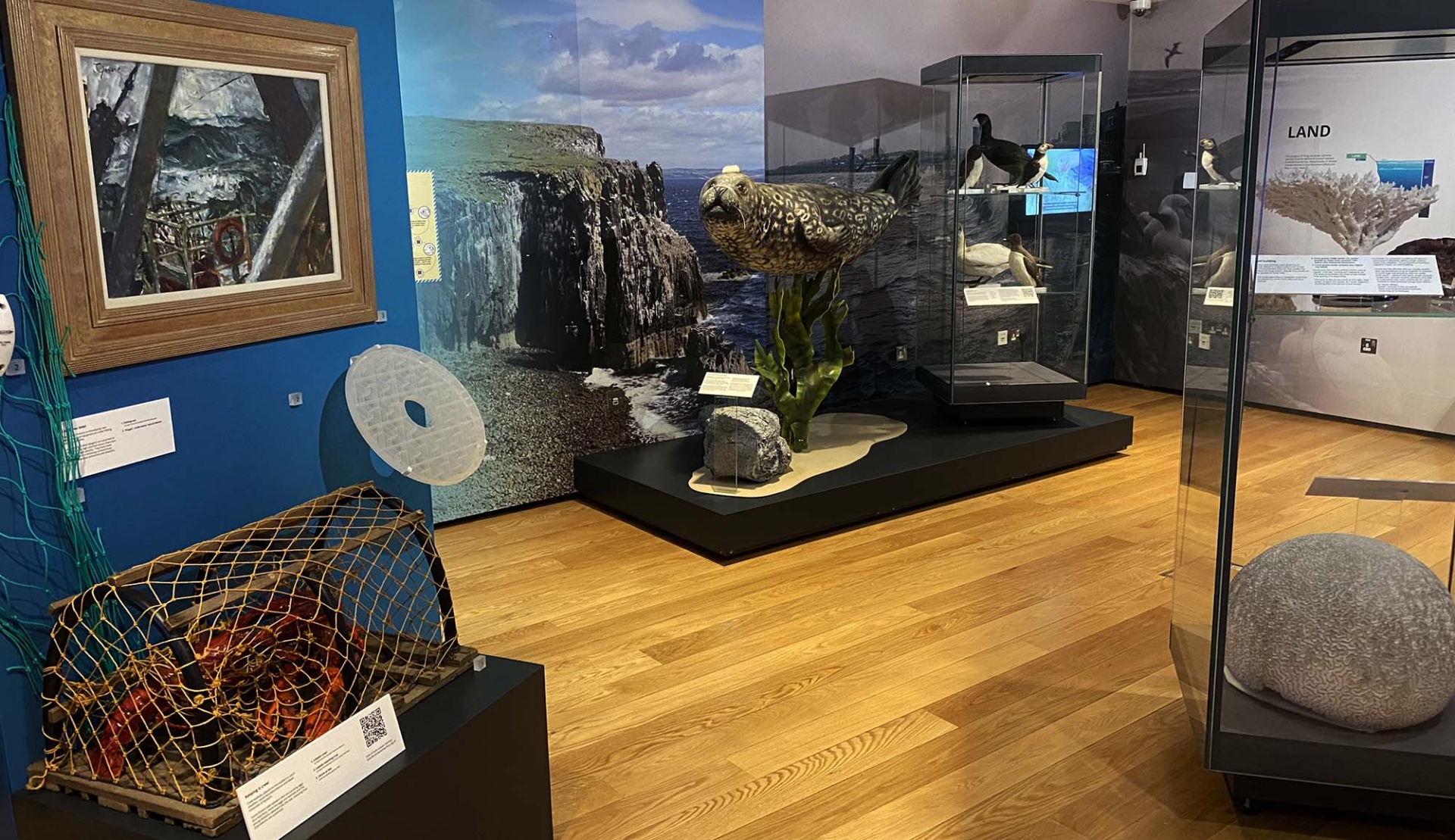Exhibitions for climate action: Dive In! opens at the Wardlaw Museum

Can exhibitions stir public engagement on climate action? Here at the Museums of the University of St Andrews, we believe they can. As trusted agents in society, museums can play a crucial role in shaping public discourse around climate change and stimulating citizen engagement and action. Our public programmes are shaped by this conviction.
Dive In! Protecting Our Ocean, an immersive new exhibition at the Wardlaw Museum, will test this explicitly, pushing at the boundaries of museum practice and intent.
Launched ahead of COP26 in Glasgow, Dive In! is a call to action. It takes visitors under the sea to explore the importance of the ocean for life on earth, the threats that it faces, and the changes that we can make as individuals to address these challenges.
The exhibition and events programme have been developed by the Museums of the University of St Andrews in partnership with the Scottish Oceans Institute (SOI) and Marine Alliance for Science and Technology for Scotland (MASTS). Supported by funding from the Calouste Gulbenkian Foundation UK, we also collaborated with Adam Corner, consultant in Behaviour Change and Environmental Psychology, and Steve Slack, consultant in Museum Interpretation and Evaluation. Exhibition design consultancy was provided by Aurelia Cloup and James Poppa.
With this wealth of interdisciplinary expertise, the Dive In! team developed a messaging strategy to engage audiences with ocean sustainability. Working in the context of a museum, we have been moved by a key question: how can we help empower our audiences, as individuals, to be a part of the solution to the climate emergency?
Central to our approach was recognition of the need to inspire a sense of hope and agency to counter any feelings of helplessness at the scale of the challenge we face. We also decided to be open and upfront, rather than covert, about our goal to motivate behavioural change in order to build credibility and trust.
Our interpretation strategy was informed by audience consultation through digital programming activities, including our ‘Critical Conversations’ discussion series and schools’ workshops; prototyping of exhibition content; review of existing literature; and consultations with marine scientists to gather case studies of climate-based research at the Scottish Oceans Institute.
As a project team, meeting mostly online, we worked through a collaborative interpretation planning process that has kept visitors’ behavioural change at the heart of our conversations. Steve Slack discusses:
“We reflected on interpretive change theory and environmental psychology theory and created our own model of behavioural change that informed nearly everything in the exhibition – from structure and design to image selection, audio and final text.
We are excited about what we created, combining our professional skills and experiences in a novel way. There’s little point in doing this if we’re not sure anything happened as a result, so evaluation starts as soon as the doors open on 8 October, trying to establish whether meaningful change was possible.”
Equipped with our model of behavioural change, we segmented our audiences into four different profiles or ‘personas’ and developed a suite of ocean-related and pro-environmental behavioural ‘asks’ or ‘actions’ for each persona. Dive In! encourages audiences to think about and connect ocean issues with ‘actions’ that they can take on an individual level. Adam Corner outlines:
“Most people have heard of the ‘nudge’ approach to changing behaviours. ‘Nudging’ is definitely better than ‘shoving’! But can we really ‘nudge’ our way to sustainability, or do we need to encourage people to ‘think’ too? That means providing spaces where the links between the big picture on climate change and environmental challenges can be connected in a meaningful way, with the decisions and choices people can make in their own lives (not just as energy consumers, but as citizens and voters too). Museums are places where people come to think, and so Dive In! is an ideal space for joining the dots between changes at the individual level and changes at the structural level, because change at every level is needed.”
Looking ahead, the project team will conduct extensive evaluation to measure the impact of Dive In! on stimulating pro-environmental behavioural change in audiences. Our learning from the project will inform our future museum practice and programming at the Wardlaw Museum. We are keen to share our findings for the benefit of the wider museum, climate communication and marine science sectors.
Dive In! is at the Wardlaw Museum, from 8 October to 30 January. Entry is free.
